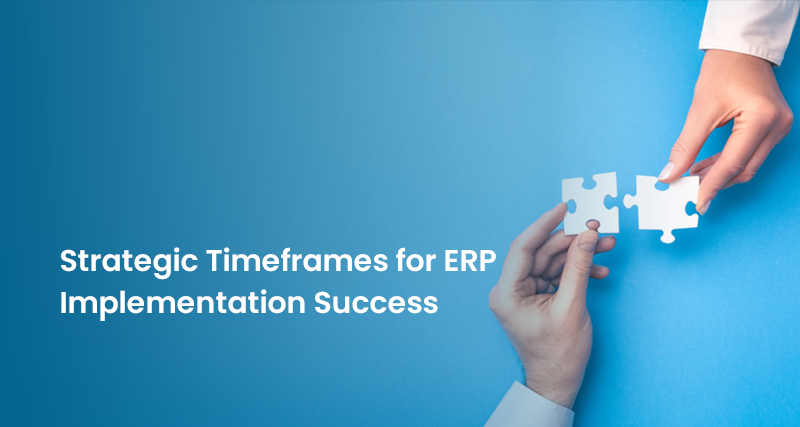
Strategic Timeframes for ERP Implementation Success
Any organization that installs an Enterprise Resource Planning (ERP) system makes a great investment which implies effectiveness improvement, less paperwork, and advanced decision-making. However, a successful ERP implementation depends on close planning and execution. One of the most crucial factors in this process is the strategic timing of implementation. This blog will explain the importance of strategic time frames in an ERP implementation and provide tips on how to increase Return on Investment (ROI) and efficiency.
Understanding Business Cycles
All businesses operate within specific cycles such as fiscal years, seasonal peaks and product launch schedules. When implemented during a slowdown period, it minimizes disruptions to daily operations.
Aligning with Organizational Goals
The timing of ERP implementation should align with the organization’s strategic goals and objectives. If a company is planning a major expansion, merger or acquisition, integrating an ERP system can pave the way for smoother transitions and integrations before they take place.
Phases of ERP Implementation
Understanding the typical phases of ERP implementation can help in planning strategic timeframes:
- Preparation And Planning
This phase includes defining project scope, setting objectives, assembling the project team among others. Therefore, there should be needs analysis conducted thoroughly before establishing well-defined goals by allocating enough planning time to avoid later issues in the implementation process.
- System Design
In this case, the system design phase configures the enterprise resource planning system to suit organizational requirements through personalizing workflow development as well as the creation of user interfaces among other features since this stage takes sufficient time when developing an efficient tailor-made system for an organization.
- Data Migration
Data migration refers to transferring old data into new setup systems where it may be complicated because it requires re-arrangement validation cleaning etc. so, we must plan for data migration problems ahead of time and allocate enough time for it so that data integrity can be ensured.
- Testing And Training
The system should be tested exhaustively to identify and correct any issues prior to its launch while users must also be trained in how to use the new system effectively. There should therefore be sufficient time allocated for testing and training that helps prevent interruptions and smoothen transition.
- Go-Live and Support
Deploying the ERP system and end-user support takes place during the go-live phase, which is usually characterized by a steep learning curve among users. Consequently, we need to plan for extra support resources in this period to address problems quickly without risking uninterrupted business continuity.
Conclusion
Strategic timing is a critical factor in the success of an ERP implementation. By aligning with business cycles, organization goals and resource availability; organizations can minimize disruptions and maximize efficiency. Understanding the phases of ERP implementation and setting realistic timelines further enhances the likelihood of success. With careful planning and execution, ERP implementation can be a transformative step toward enhanced operational efficiency and business growth.
Looking for Oracle NetSuite Cloud ERP Implementation partner for your organization? Do you require help selecting cloud ERP solution provider from one of the top NetSuite Solution Providers like SoftCore Solutions basing on your requirements!